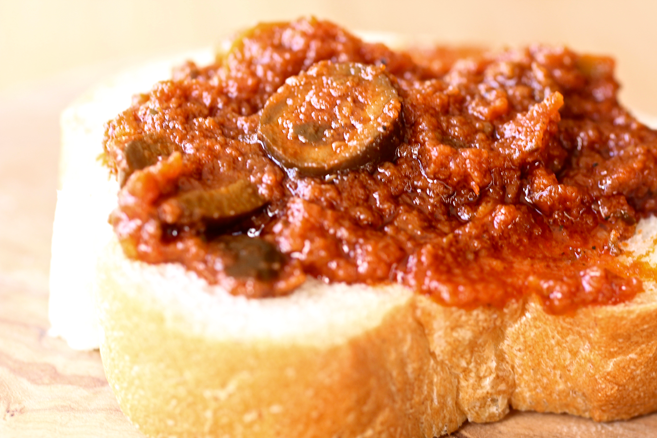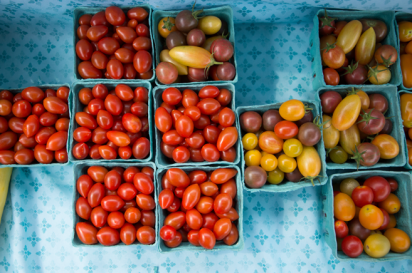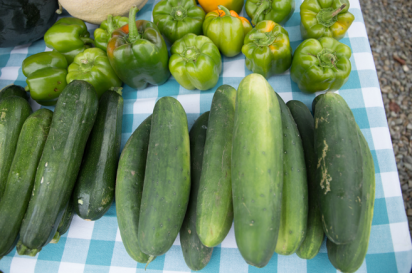Long Yardage: San Francisco roots help coach score in his Indiana kitchen
Living in San Francisco has its perks—especially when it comes to food. Time and time again, the city has been voted one of the top food destinations in the country, if not the world. Travel+ Leisure magazine, U.S. News & World Report and The Washington Post all list San Francisco as one of America’s top five food cities and in 2014, according to the San Francisco Business Times, one restaurant per week opened in the Bay Area.
Why the obsession with food? Lots of reasons … the city boasts more than 50 farmers markets, close to 100 Michelin-starred restaurants—it’s one of only four U.S. cities with its own Michelin Guide—and has everything from upscale restaurants to hole-in-the-wall eateries as well as distinctive cultural neighborhoods such as North Beach (Italian), Chinatown (Chinese) and the Mission (Mexican).
Denver Wade, an English teacher, football and track coach at Westfield High School, grew up in San Francisco’s Bernal Heights, just south of the Mission District. “Growing up, I lived in an area heavily populated by Mexican Americans. When my family did go out to eat, we would often go to one of the taquerias or seafood places lining Mission Street.” Wade says he fell in love with Mexican food at a young age and during high school, when he’d take the city bus to and from school, he used to try and stop at a new restaurant or taqueria every week. “Moving around the country, I saw that Mexican cuisine is different than what it was in San Francisco. Often times, what is considered Mexican would be seen more as Tex-Mex and miss the flavorings and freshness that the Mexican food had in San Francisco,” he says. “I feel like I’m trying to re-create the flavors of the Mission District and my childhood when I cook Mexican food. Whether cooking chicken tinga, experimenting with salsa verde or making a dish with roasted poblanos, corn and tomatoes, I feel like I am, in a certain sense, going home to the great energy that Mission Street represented for me growing up.”
Gaining inspiration abroad
“I grew up in a family that often cooked at home and rarely went out or bought prepared foods,” he says. “I never cooked myself—but I certainly loved to eat.” His father was a construction worker by day, but loved to cook. “It was his way to relax when he got home. He started cooking when he was on his own, as a way to save money; however, by the time he was married and I was born, he looked at it as a way of being creative and relaxing. “He loved going to the big farmers market [in San Francisco]—huge in comparison to Carmel’s and not glamorous, yet full of the freshest food—off Alemany Boulevard, and buying fresh basil. He would make a huge portion of pesto Genovese and serve it with pasta—one of my favorite dishes, if not my absolute favorite. In the winter months, my father would make a sun-dried tomato and parsley pesto as well, heartier than the basil pesto, and full of rich flavor.”
As for his own love of cooking, he says it came from the time he spent coaching American football in Catania, Sicily, Italy. “The simplicity and healthiness of the cooking, combined with the amazing flavors of the fresh ingredients, inspired me to cook for myself when I returned stateside to Mississippi, where I first taught. Being able to cook for myself gave an element of balance in my life and inspired a creative side within me.”
Nowadays, Wade tries to emulate what his father did in the kitchen by using fresh, seasonal ingredients to create and complement his own cooking. “In the summer, I load up on basil and every weekend make a large portion of pesto,” freezing some for the times he’s too busy to prepare something fresh during the school year. He also makes the same sun-dried tomato pesto his father used to make. “When I was in Italy, I made it for my then girlfriend, now wife, and her friends, and they loved it!”
Cooking lavishly is easier done with fresh ingredients
All-in-all, Wade says his cooking style is based on getting the best fresh, seasonal and local ingredients available. This past summer, he’d wake up as early as he could to get heirloom tomatoes and basil at one stand, before venturing to others for fruits and vegetables. Once football season started—he is the varsity offensive line coach and the freshman team’s head coach—he was too busy to frequent farmers markets and, instead, opted for a local fruit stand in Carmel.
Wade says he also runs to Goose the Market for certain cuts of meats and sausages, and he buys bread from Amelia’s Bakery in Fountain Square. “I was spoiled growing up in San Francisco where there’s a very strong bread culture; Amelia’s re-creates that here,” he says.
“When a cook has great ingredients, he or she can cook simply and still have great-tasting and healthy food.” And one can cook ornately by combining different sauces and cooking methods and the food will be excellent, so long as the ingredients are excellent.
“I prefer to use raw ingredients and not buy pre-prepared ingredients. I try to be seasonal in my cooking, letting the fruits and vegetables of that season take center stage. Tomatoes, zucchini, eggplant, greens, corn and peppers dominate the summer months, while winter squash, potatoes, beans and roasted or dried chili peppers take precedence in the fall and early winter. In the winter, I cook with more meat, mushrooms, dairy and preserved foods like sun-dried tomatoes.” As for the spring, he says it’s a tossup, depending on what is available. “Here in Indiana, you never know.”
During the summer, Wade goes to the Carmel Farmers Market and sometimes the Noblesville Farmers Market. But, he says that while he does love the food vendors at the Carmel market, sometimes he feels like the markets here try to emphasize a lifestyle more than just being a place for farm-fresh food. “In San Francisco, the Alemany Boulevard Farmers Market has been in existence since 1943. There were never any bands playing, and the ambiance was more of a wholesale environment than what one sees at the various Hamilton County farmers markets. There were certainly other farmers markets throughout the city that did cater to the idea of lifestyle, but we never went to those.”
Start with a recipe and ad lib from there
“Cooking in my kitchen is chaotic! I rarely have a picture-perfect kitchen where everything is organized and put away,” he says. “As a cook, I tend to rely on recipes first and then build from there. However, my wife has a far more improvising touch. She can create the tastiest things on a whim with raw ingredients. During football season, she will often cook during the week, and I cook on the weekends. On those weekends, I try to make bigger, more complex meals.” The most important thing, he says, is “just have fun while cooking. It is a fluid process,” he says. “When I was younger, my father did everything in the kitchen but holidays were the exception—I was in charge of the mashed potatoes. I remember boiling the potatoes, draining them and then constantly experimenting with different ratios of milk and cream to try and create the perfect creamy texture. “Keep tasting as you’re cooking to get the desired effects. As the cook, you have agency over what you create, and you can keep adjusting until you get it just right.”
Recipe: Sun-Dried Tomato Pesto
¾ cup sun-dried tomatoes in olive oil
¾ cup pitted Kalamata olives (or any black olives)
2 garlic cloves, pressed
1 cup chopped fresh Italian parsley, packed tightly
½ cup pine nuts
½ cup olive oil
Combine all ingredients in a food processor and process until well-blended. Great when mixed with pasta or used as an accompaniment with vegetables, meats or stirred into soup. Refrigerate up to a month in a closed container.







